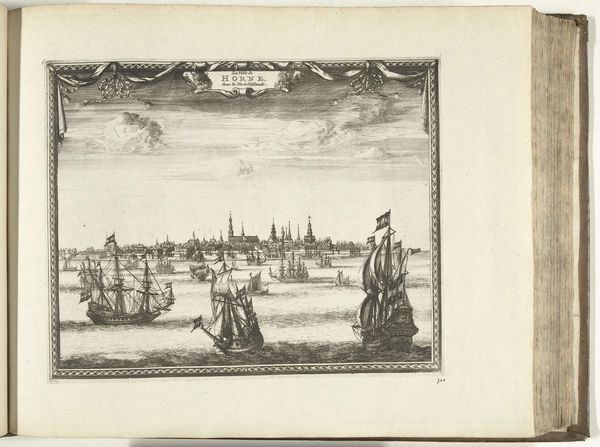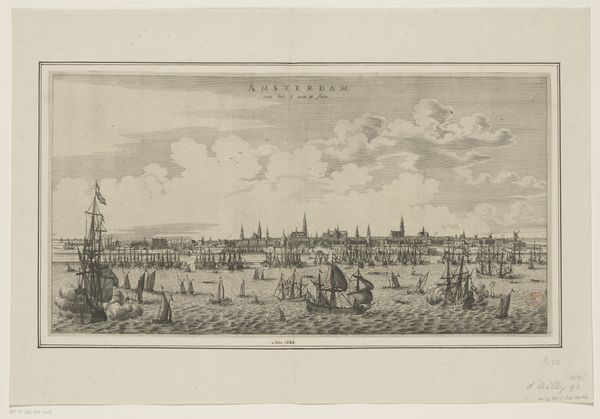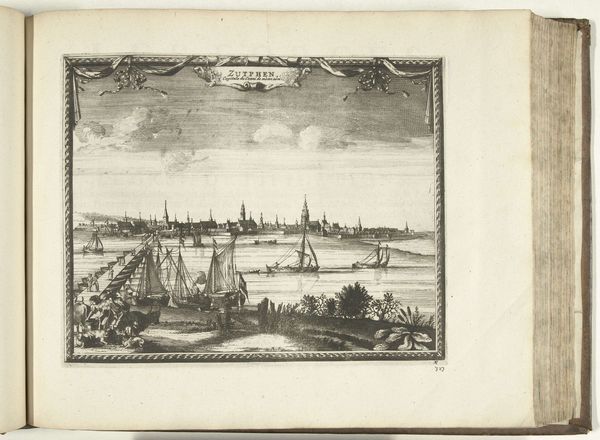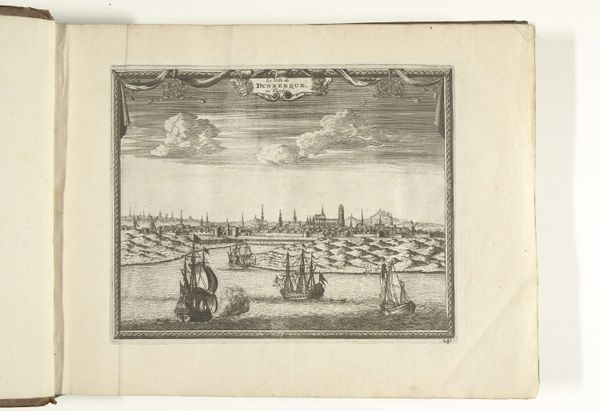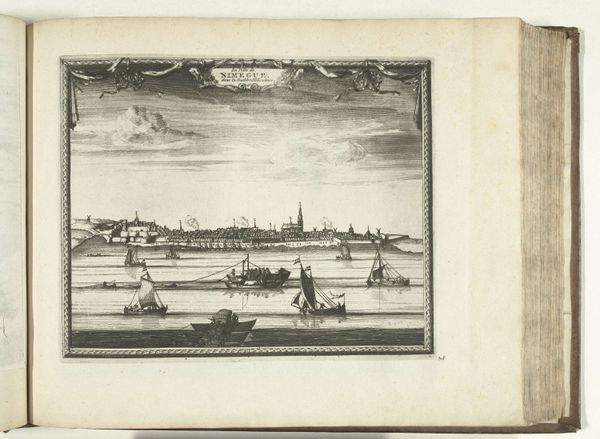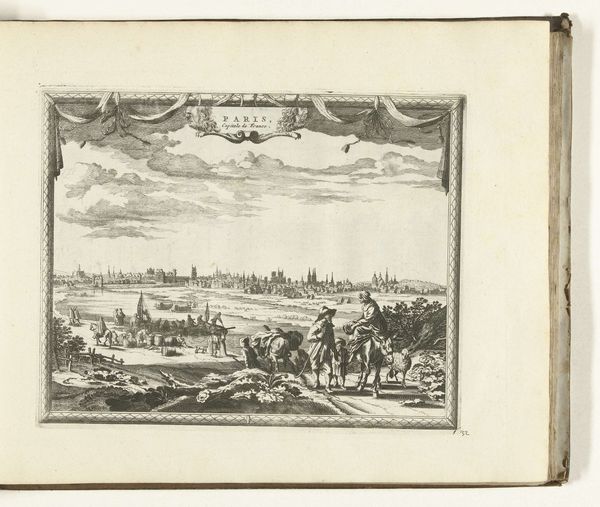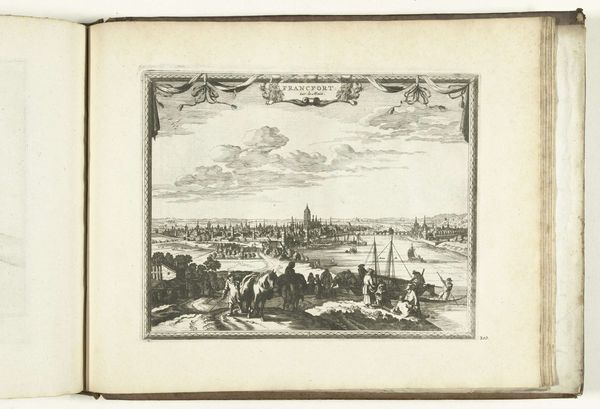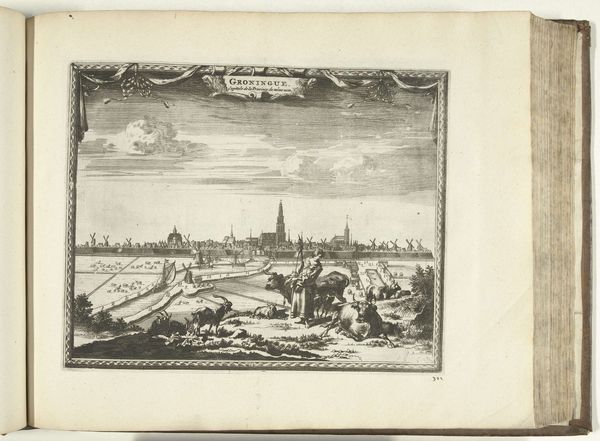
print, engraving
#
baroque
# print
#
landscape
#
cityscape
#
engraving
Dimensions: height 222 mm, width 274 mm
Copyright: Rijks Museum: Open Domain
Curator: This print, entitled "Gezicht op Antwerpen, 1726," captures a view of Antwerp in the Baroque style, a cityscape meticulously rendered by an anonymous artist through the technique of engraving. Editor: There’s a quiet solemnity to this scene, wouldn’t you say? The sharp lines create a crispness, and the sheer number of ships gives it an active feel while somehow retaining a somber stillness. Curator: The material production tells us a lot about consumption in the 18th century. Printmaking allowed for wide distribution, thus increasing visibility for both Antwerp as a mercantile center, and the anonymous artist who made it. What stories these prints could tell, circulating throughout different social strata and perhaps impacting perceptions and material realities across Europe! Editor: Absolutely. Speaking purely formally though, note how the artist directs our gaze using the framing elements, leading towards the delicate rendering of Antwerp's skyline on the horizon. The detailed treatment of the sky above and the water below anchors the scene within a defined space. What does this framing signify beyond just the image itself? Curator: Frame within frame speaks to how economic networks produce what they enclose—an idealized rendering and booming port city which can serve as propaganda of mercantile success. I would also add that a focus on the social implications means this print invites inquiries regarding maritime labor, ship production, and all manner of material exchanges linked to global economies of trade during that historical period. Editor: Precisely. By paying attention to these aspects, it enriches our interpretation of Antwerp's significance back in 1726. In viewing these various formal elements and connecting them to Antwerp as it existed in its historical moment, its image evolves from being just visually striking, turning instead into a testament—as much for material prosperity as the techniques employed in image reproduction at this moment. Curator: Examining the materials and distribution methods allows us insight into how labor shapes art production while disseminating perceptions across social tiers simultaneously—consider these impressions of this early urban rendering traveling to rural communities removed geographically from ports, and imagining just what their owners could glean vicariously via its circulation through Europe’s arteries and networks. Editor: Exactly. That intersection, linking visual construction and production methods alongside history itself transforms that original still sentiment and connects us both with the art, along with an awareness concerning ourselves now—and its earlier consumers previously; an artistic form with socio-cultural ramifications!
Comments
No comments
Be the first to comment and join the conversation on the ultimate creative platform.

